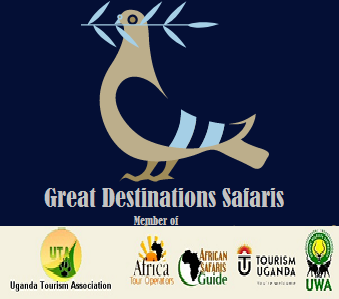Weather
Weather
Uganda is crossed by the Equator. As a result the climate does not change much and they can be visited throughout the year. The rainy seasons tend to be from March to April and October to November, but this varies in different areas and it can rain any time of year, especially in the forest and mountainous areas. Travel can be slower in the rainy season but the views are often better. Gorilla tracking can be muddier but it can certainly be done. In the mountainous areas it is much colder than on the plains and the rainfall is greater. The temperatures on the plains tend to be between 21°C and 30°C and in the mountainous areas they can go down to 10°C in certain months. So our advice is to travel when it is most convenient and usually the rain, which is often for short periods, is part of the great experience.
A client may avoid tracking in the "official" rainy season only to find that it pours throughout his visit during another period! For this reason camps and lodges are not closed during the rainy season as they do in savannah countries. It is important to be well equipped at all times and follow your guide’s advice.
Safaris that include a visit to the gorillas are subject to availability of permits at time of booking. Please check with us for availability before you travel. Book your gorilla permit in advance to avoid disappointment. Gorilla permits are in high demand, because of the stiff competition for them, and therefore are booked with payment on the basis of first come first served. To track gorillas each person must have the day’s gorilla permit which needs to be arranged and paid for in advance, and if you are bringing a group of 10 or more, it is highly recommended that you book preferrably at least 10 months for the high seasons - June-September and December-February; or latest 4-6 months in advance for the low seasons - October-November and March-May. Contact us for the latest status of availability, even for last-minute bookings.
Below is a list of safaris to Uganda. Uganda, twice the size of Pennsylvania, is in East Africa. It is bordered on the west by Congo, on the north by the Sudan, on the east by Kenya, and on the south by Tanzania and Rwanda. Although generally equatorial, the climate is not uniform as the altitude modifies the climate. Southern Uganda is wetter with rain generally spread throughout the year. In the centre of the country at Kampala and Entebbe (on the northern shore of Lake Victoria), most rain falls from March to June and the November/December period. Further to the north at Gulu and Murchison Falls, a dry season gradually emerges; November to February is much drier than the rest of the year. The northeastern Karamoja region has the driest climate and is dominated by the Karimojong nomadic. Ruwenzori in the southwest on the border with Congo (DRC) receives heavy rain all year round. The south of the country is heavily influenced by one of the many forests there, and one of the world's biggest lake, Lake Victoria, which contains many islands and birds. Main Tourist Attractions are Gorillas in Bwindi Impenetrable National Park, Chimpanzees in Kibale National Park; Kidepo Valley National Park; Lake Mburo National Park; Mgahinga Gorilla National Park; Mount Elgon National Park; Murchison Falls National Park; Queen Elizabeth National Park; Rwenzori Mountains National Park; and Semuliki National Park.




